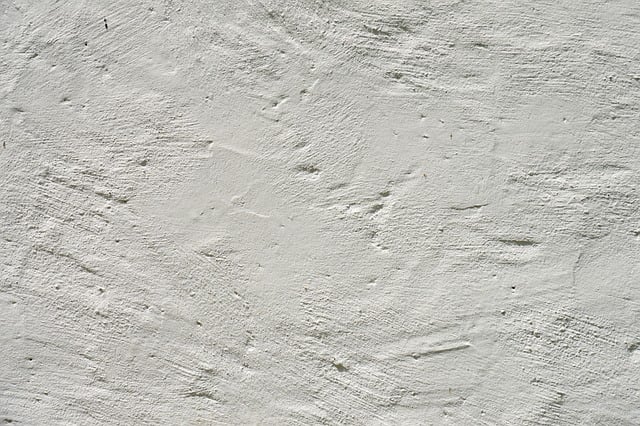Understanding the Different Types of Computer Graphics is an important part of any digital artist’s toolkit. Computer graphics are used to create images, animations, and other visuals for a variety of applications.
In this blog, we’ll explore the different types of computer graphics and how they can be used to create stunning visuals. We’ll also look at the advantages of using computer graphics and how they can help to make your projects stand out. Finally, we’ll discuss the different software and tools available to help you create the perfect graphics.
So let’s get started and explore the world of computer graphics.
Types of computer graphics
Computer graphics are a powerful visual tool that can be used to present information in a way that allows viewers to easily understand it. Understanding the different types of computer graphics is important in order to use them effectively in any project. The most common type of graphic is vector graphics, which uses geometric shapes, lines, and curves to create an image that looks clean and professional.
Raster graphics don’t use these shapes, and are instead composed of colored pixels that can be distributed together in various patterns. Both types of computer graphics can be used for web designs, illustrations, animations, and many other applications.
Computer graphics can help communicate a message or concept quickly and effectively, and understanding the different types will allow you to get the most out of your graphics.
2d computer graphics

:2d computer graphics is a vast topic in the world of multimedia and digital art that encompasses a will range of applications from the everyday in our media, such as cartoons and video games, to more specialized applicationslike advertising, architectural and engineering design. Understanding the different types of computer graphics can help us to distinguish the different design features in these various applications, as well as make better decisions when choosing which kind of graphics to use for a particular project.
2d computer graphics involve manipulating two-dimensional elements, such as lines and shapes, to create digital images on a computer screen. It is this process that allows us to create realistic-looking images which can be used to bring characters and scenes to life in our media and applications.
3d computer graphics

When it comes to 3D computer graphics, it is important to understand the different types available. In essence, there are two categories of 3D computer graphics – traditional computer graphics and interactive computer graphics.
Traditional computer graphics involve the use of software to create graphics such as images, textures, and animations, and interactive computer graphics allow for user interaction via the use of a mouse and keyboard. Understanding these two types of graphics can help you create visually stunning 3D worlds and experiences.
Vector graphics

Computer graphics consists of various different types, each of which can be used to express something differently. Vector graphics is one type that aids us in creating digital images, logos, and illustrations with precision. This type of computer graphics uses geometric objects such as points, lines, and curves to represent images.
Conceptual understanding of vector graphics can be quite tricky, as it involves mathematical calculations like magnitudes, angles, circles, and lines. Nevertheless, this powerful form of graphics allows you to create incredibly accurate designs with the help of computers– making the understanding of vector graphics a worthwhile endeavor.
Raster graphics

Understanding the different types of computer graphics can be a real puzzle – how do you know which type works for your project? Luckily, deciding between raster graphics and vector graphics doesn’t have to be so hard. Raster graphics are the type of digital images most of us are familiar with – images you’d find on the internet are usually saved in formats like JPG, GIF, and PNG.
They’re composed of small individual dots of color, and are best used for creating photo-realistic images. On the other hand, vector graphics utilize shapes, lines, and curves that can be used to create art and illustrations.
As it’s resolution-independent, vector graphics are great for creating both small and large-scale designs. So, there you have it: two completely distinct types of computer graphics, each suited to a different purpose.
Now that you understand how raster graphics differ from vector graphics, feel free to experiment to get the results you need!
Animation graphics
:Computer graphics encompass a variety of techniques used to generate images on a monitor, from simple 2D graphics to complex 3D models. Understanding the different types of computer graphics can help you decide which option is best for your project. 2D graphics are generated in a single plane, and are used to create logos, diagrams, and images.
3D graphics offer depth, and are often used to create realistic models and simulations. Animations are another type of computer graphics, and they use a series of frames to create the illusion of motion.
With all of these techniques, you can create beautiful, realistic visuals and animations to bring your project to life.
Bottom Line
Computer graphics are a powerful tool for creating digital art, animation, and visual effects. There are several different types of computer graphics, each with its own unique set of characteristics.
Vector graphics are composed of lines, shapes, and curves, while raster graphics are composed of pixels. 3D graphics are used to create realistic images, while 2D graphics are used to create flat images. Computer graphics can be used to create stunning visuals for video games, movies, and other media.
FAQ
What are the different types of computer graphics?
The different types of computer graphics include raster graphics, vector graphics, 3D graphics, animated graphics, and graphical user interface (GUI) elements.
What are the advantages and disadvantages of each type of computer graphics?
The advantages of vector graphics are that they are resolution independent, meaning they can be scaled to any size without losing quality. They also require less storage space and can be easily edited. The disadvantages are that they are not as realistic as raster graphics and can be difficult to create. The advantages of raster graphics are that they are more realistic and can be used to create detailed images. The disadvantages are that they are resolution dependent, meaning they cannot be scaled without losing quality, and require more storage space.
How can computer graphics be used to create visual effects?
Computer graphics can be used to create visual effects by manipulating images and objects to create realistic or stylized visuals. This can include adding lighting and shadows, creating 3D models, and manipulating colors and textures.
What are the most common applications of computer graphics?
The most common applications of computer graphics include video games, animation, web design, scientific visualization, and data visualization.
What are the differences between vector and raster graphics?
Vector graphics are composed of lines and curves defined by mathematical objects, while raster graphics are composed of pixels arranged to form an image. Vector graphics are resolution independent, meaning they can be scaled to any size without losing quality, while raster graphics are resolution dependent and will lose quality when scaled. Vector graphics are also more efficient in terms of file size and are better suited for illustrations, logos, and type, while raster graphics are better suited for photographs and other detailed images.
How can computer graphics be used to create interactive experiences?
Computer graphics can be used to create interactive experiences by allowing users to interact with the visuals on the screen. This can be done through the use of animation, 3D models, and other visual elements that can be manipulated by the user. This can create an immersive and engaging experience for the user.




